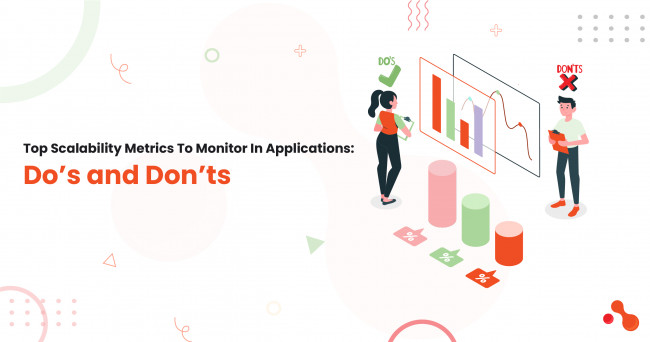Introduction

In today's increasingly digital work environment, effective collaboration among remote teams is crucial for productivity and team cohesion.
This comprehensive guide outlines essential strategies to enhance remote team collaboration effortlessly, drawing on best practices and insights from industry experts.
What is Remote work?
Remote work, also known as telecommuting or telework, is an arrangement for working which enables an employee to conduct his or her job away from the traditional office environment.
This may be required to be done from home or even a coworking space or any other place other than the physical office of the company. This has been possible because of technological advancement, which facilitates the smooth collaboration and communication among team members where they are geographically located.
Statistics on Remote Work and Collaboration
Increased Productivity:
A study by Stanford University found that remote workers are 13% more productive than their in-office counterparts due to fewer distractions.
Employee Satisfaction:
According to a Buffer survey, 99% of remote workers would like to work remotely at least some of the time for the rest of their careers, highlighting the importance of flexibility in work arrangements.
Communication Challenges:
A report from Gallup indicates that 70% of employees feel disengaged when they lack clear communication from their leaders, emphasizing the need for effective communication strategies in remote settings.
Time Zone Differences:
Research by Time Zone Ninja shows that 60% of remote teams struggle with time zone differences, which can lead to delays in project timelines if not managed properly.
Team Cohesion:
A survey by Harvard Business Review found that teams with strong social connections are 50% more productive than those without, underlining the importance of team bonding activities.
Retention Rates: A study by Owl Labs revealed that companies with flexible work options see a 25% lower turnover rate, indicating that remote work can enhance employee retention when managed well.
Collaboration Tools Usage:
According to a report from McKinsey, organizations that use collaboration tools effectively can increase productivity by up to 30%.
Mental Health Impact:
A survey by Mind Share Partners found that 76% of employees experience burnout at work, emphasizing the need for strategies that prioritize mental well-being in remote settings.
Essential Strategies for Enhancing Remote Team Collaboration
1. Establish Clear Communication Norms
Clear communication norms are essential for ensuring that everyone on the team understands how and when to communicate effectively.
Recommended Communication Channels
| Communication Channel | Purpose | Recommended Tool |
|---|---|---|
| Formal communication | Gmail, Outlook | |
| Instant Messaging | Quick questions/discussions | Slack, Microsoft Teams |
| Video Conferencing | Meetings and discussions | Zoom, Google Meet |
| Project Management | Task tracking and updates | Trello, Asana |
Response Time Expectations
| Response Type | Expected Response Time |
|---|---|
| Urgent Messages | Within 1 hour |
| Non-Urgent Emails | Within 24 hours |
| General Inquiries | Within 48 hours |
Best Practices for Communication Norms
- Regular Check-Ins: Schedule weekly or bi-weekly check-ins to ensure everyone is aligned on project goals and deadlines. These meetings can be brief (15-30 minutes) but should focus on key updates and roadblocks.
- Use Visuals: Incorporate visuals in presentations or updates (like infographics or charts) to make information easier to digest. Tools like Canva or Piktochart can help create engaging visuals.
- Establish a Communication Style Guide: Create a document outlining preferred language styles, tone, and formats for communication (e.g., using bullet points for clarity).
- Create a Communication Calendar: Develop a calendar outlining when different types of communications will occur (e.g., weekly updates, monthly reviews) so everyone knows what to expect.
2. Foster a Culture of Video Communication
Video calls can significantly enhance communication by allowing team members to pick up on
non-verbal cues that are often lost in text-based communication.
Tips for Effective Video Meetings
- Set an Agenda: Always have an agenda distributed before meetings to keep discussions focused and efficient. Use tools like Google Docs or Notion for collaborative agenda setting.
- Encourage Participation: Use techniques like round-robin questioning or polls during meetings to engage all participants actively. Tools like Mentimeter can facilitate live polling during video calls.
- Record Meetings: For team members unable to attend live meetings due to time zone differences, recording sessions allows them to catch up later without missing important information.
- Use Breakout Rooms: In larger meetings, utilize breakout rooms for smaller group discussions. This encourages participation and allows for more focused conversations.
- Dress Code and Environment: Encourage team members to dress appropriately and choose a suitable environment for video calls. This helps maintain professionalism and sets the tone for serious discussions.
3. Set Clear Goals and Objectives
Clear goals are essential for guiding team efforts and ensuring everyone understands their roles within projects.
SMART Goals Framework
Utilize the SMART criteria when setting goals:
- Specific: Clearly define what needs to be achieved.
- Measurable: Establish criteria for measuring progress.
- Achievable: Ensure goals are realistic given the resources available.
- Relevant: Align goals with broader team objectives.
- Time-bound: Set deadlines for completion.
Example of SMART Goals in Action
Instead of saying "Increase website traffic," a SMART goal would be "Increase website traffic by 20% over the next quarter through targeted social media campaigns."
Goal Tracking Techniques
- Use OKRs (Objectives and Key Results): Implementing OKRs can help teams align their individual goals with organizational objectives while providing measurable outcomes.
- Regular Review Sessions: Schedule monthly reviews to assess progress towards goals and make necessary adjustments based on performance data.
4. Leverage Project Management Tools
Implementing project management tools like Trello, Asana, or Basecamp can streamline collaboration by providing a centralized platform for task assignments, deadlines, and progress tracking.
Popular Project Management Tools
| Tool | Key Features | Best For |
|---|---|---|
| Trello | Kanban boards, task assignments | Visual task management |
| Asana | Timeline views, workload management | Complex project tracking |
| Basecamp | Message boards, schedules | Simple project coordination |
| Monday.com | Customizable workflows | Diverse project needs |
Best Practices for Using Project Management Tools
- Create Templates for Repetitive Tasks: Save time by creating templates for recurring projects or tasks within your chosen tool.
- Use Tags and Labels: Organize tasks using tags or labels (e.g., priority levels) to help team members quickly identify what needs immediate attention.
- Integrate with Other Tools: Many project management tools allow integration with other software (like Slack or Google Drive), streamlining workflows further.
5. Prioritize Clarity in Communication
When communicating with remote teams, clarity is paramount. Avoid jargon or overly complex language; instead, aim for brevity and straightforwardness in your messages.
Techniques for Clear Communication
- Summarize Key Points: At the end of meetings or communications, summarize key takeaways to reinforce understanding.
- Use Templates: Create templates for common communications (like project updates) to ensure consistency and clarity.
- Encourage Visual Aids: Use diagrams or flowcharts when explaining complex processes or ideas to enhance understanding.
- Feedback Mechanism on Communication Clarity: Regularly solicit feedback from team members about how clear they find communications; adjust accordingly based on their input.
6. Create Opportunities for Team Bonding
Just because teams are remote doesn't mean they shouldn't bond. Organize virtual activities such as trivia nights, online escape rooms, or casual game sessions to foster camaraderie among team members.
Examples of Virtual Team-Building Activities
- Virtual Happy Hours: Schedule informal gatherings where team members can relax and socialize over drinks.
- Online Workshops: Host skill-sharing sessions where team members can teach each other something new (e.g., cooking classes, coding tutorials).
- Fitness Challenges: Encourage physical activity through friendly competitions (e.g., step challenges) using apps like Strava or Fitbit.
- Book Clubs or Movie Nights: Organize monthly book clubs or movie nights where team members can discuss their favorite reads or films together virtually.
7. Maintain Transparency
Transparency is crucial in building trust within remote teams. Share relevant updates about company news, project changes, or individual contributions openly with the entire team rather than filtering information through managers alone.
Strategies for Maintaining Transparency
- Weekly Newsletters: Send out weekly newsletters summarizing important updates and achievements across teams.
- Open-Door Policy: Encourage an open-door policy where employees feel comfortable discussing concerns or suggestions with leadership.
- Transparent Decision-Making Processes: Involve team members in decision-making processes where feasible; share how decisions are made and the reasoning behind them.
8. Build Trust Among Team Members
Team leaders should model trust-building behaviors by being open about their challenges and successes. Demonstrating vulnerability encourages team members to do the same.
Building Trust Through Actions
- Be Consistent: Follow through on commitments made during meetings or discussions; consistency builds reliability.
- Acknowledge Contributions Publicly: Regularly recognize individual contributions publicly during meetings or through company channels like Slack or email newsletters.
- Team Retreats (Virtual/Physical): Organize retreats aimed at strengthening relationships among team members; these can be virtual workshops focusing on personal development or in-person gatherings if possible.
9. Respect Work-Life Balance
Establish clear boundaries around work hours to respect employees' personal time. Encourage teams not to expect responses outside of agreed-upon working hours unless it’s an emergency.
Tips for Promoting Work-Life Balance
- Flexible Hours Policy: Allow employees to set their own schedules as long as they meet deadlines; this flexibility can lead to higher job satisfaction.
- Encourage Time Off Regularly: Promote taking regular breaks and vacations to recharge physically and mentally; consider implementing mandatory time-off policies if feasible.
- Mental Health Days Off: Encourage employees to take mental health days when needed without stigma; this fosters a supportive environment focused on well-being.
10. Continuous Improvement Through Feedback
Regularly ask for feedback on collaboration practices from your remote teams. Understanding their pain points can provide valuable insights into what’s working well and what needs adjustment.
Implementing Feedback Loops
- Quarterly Surveys: Conduct quarterly surveys asking team members about their experiences with collaboration tools and practices; use anonymous surveys if necessary.
- Feedback Sessions with Action Plans: Hold dedicated sessions where employees can voice their thoughts on current processes without fear of judgment; follow up with action plans based on feedback received.
Future Trends in Remote Team Collaboration
As remote work continues to evolve, several key trends are shaping the future of collaboration among distributed teams. These trends reflect a shift in how organizations operate and how employees engage with their work environments. Understanding these trends can help businesses adapt and thrive in the new landscape of remote work.
1. Hybrid Work Models
The hybrid work model combines remote and in-office work, allowing employees to split their time between both environments. This approach offers flexibility while fostering in-person collaboration when necessary. According to recent studies, 64% of organizations believe that virtual team setups will be a permanent fixture, indicating a strong shift towards hybrid models.
Benefits:
- Flexibility allows employees to choose where they work based on tasks and personal preferences.
- Enhanced collaboration opportunities during scheduled in-person meetings.
2. Digital Nomadism
With the rise of remote work, many individuals are embracing digital nomadism, working from various locations around the world while maintaining professional responsibilities.
Implications:
- Companies can hire talent globally, expanding workforce diversity.
- Employees enjoy greater freedom in creating a work-life balance that suits their lifestyle preferences.
3. Focus on Employee Well-being
The shift to remote work has highlighted mental health's importance. Companies increasingly implement initiatives such as flexible working hours, virtual wellness programs, and mental health resources.
Strategies:
- Offer subscriptions to meditation apps or virtual fitness classes.
- Allow employees flexibility in adjusting hours based on personal needs.
4. Emphasis on Remote Collaboration Tools
The demand for effective collaboration tools has surged as teams adapt to remote work environments.
Future Developments:
- Expect advancements in AI-driven tools that enhance productivity through automation.
- Emerging technologies may allow teams to meet in virtual environments simulating physical presence.
5. Cloud Computing and Virtualization
The adoption of cloud computing is transforming how remote teams operate by providing flexibility, scalability, and enhanced security.
Benefits:
- Employees can access applications from any device or location.
- Reduces the need for physical infrastructure while lowering operational costs.
6. Increased Focus on Cybersecurity
As remote work expands, so do concerns about cybersecurity threats; organizations must prioritize robust security measures.
Strategies:
- Implement VPNs and encryption tools for secure connections.
- Educate employees about potential threats such as phishing attacks.
7. Performance Management Evolution
Traditional performance management methods are evolving due to remote work dynamics; organizations now focus more on results than time-based assessments.
Key Changes:
- Outcome-based evaluations concentrate on deliverables rather than hours worked.
- Establish continuous feedback mechanisms aligned with organizational goals.
8. Rise of Co-working Spaces
While many employees enjoy working from home flexibility, there is a growing trend toward using co-working spaces, providing professional settings that foster collaboration while allowing networking opportunities.
Benefits:
- Networking opportunities with professionals from various industries.
- Structured environments offer distraction-free zones compared to home offices.
How can Acquaint Softtech help?
Acquaint Softtech is a software development outsourcing as well as an official Laravel Partner, offering IT staff augmentation to minimize skill scarcity gaps within the company's development teams.
Besides, we also specialize in MEAN stack development and MERN stack development for the last 11 years, pulling off some really exciting projects from various niches like FinTech, Real Estate, EdTech, etc. by helping them hire MEAN stack developers or hire MERN stack developers, or offering them outsourced software development.
The hiring rates for remote developers start from at least a minimum rate of $15/hour to enable the companies to cater to their needs at the most affordable pricing, hence delivering cost savings easily.
We have been spreading out our roots recently by developing our companies in New Zealand along with our earlier expansions in the United States and the United Kingdom. We are officially registered and headquartered in India.
Conclusion
Improving remote team collaboration requires intentional strategies that promote clear communication, trust-building, goal-setting, and team bonding while adapting to future trends shaping how we work together remotely.
By implementing these essential tips alongside an understanding of emerging trends, such as hybrid models, digital nomadism, enhanced employee well-being initiatives, organizations can foster an inclusive environment that enhances productivity while ensuring all team members feel connected and valued.
As remote work continues its evolution journey forward into uncharted territories filled with possibilities, staying adaptable will empower teams not only to thrive but also innovate within this dynamic digital landscape while maintaining healthy workplace cultures focused equally upon productivity as well-being.
Frequently Asked Questions
1. What is remote work?
Remote work, also known as telecommuting, allows employees to perform their job duties from locations outside the traditional office environment, such as home or co-working spaces. This flexibility has been made possible by advancements in technology that facilitate communication and collaboration among geographically dispersed teams.
2. What are the benefits of remote work?
Remote work can lead to increased productivity, higher employee satisfaction, and lower turnover rates. Studies have shown that remote workers can be up to 13% more productive than their in-office counterparts, and 99% of remote workers express a desire to continue working remotely at least part-time.
3. How can teams enhance collaboration in a remote setting?
Teams can enhance collaboration by establishing clear communication norms, fostering a culture of video communication, setting SMART goals, leveraging project management tools, and creating opportunities for team bonding. Regular check-ins and transparency in communication are also crucial for maintaining team cohesion.
4. What future trends are shaping remote team collaboration?
Key trends include the rise of hybrid work models, digital nomadism, a focus on employee well-being, and an increasing emphasis on effective remote collaboration tools. Organizations are also prioritizing cybersecurity measures as remote work expands.
5. How can Acquaint Softtech assist with remote work needs?
Acquaint Softtech offers IT staff augmentation and specializes in software development using MEAN and MERN stacks. They provide access to skilled developers at competitive rates, helping companies fill skill gaps and manage their development needs efficiently















